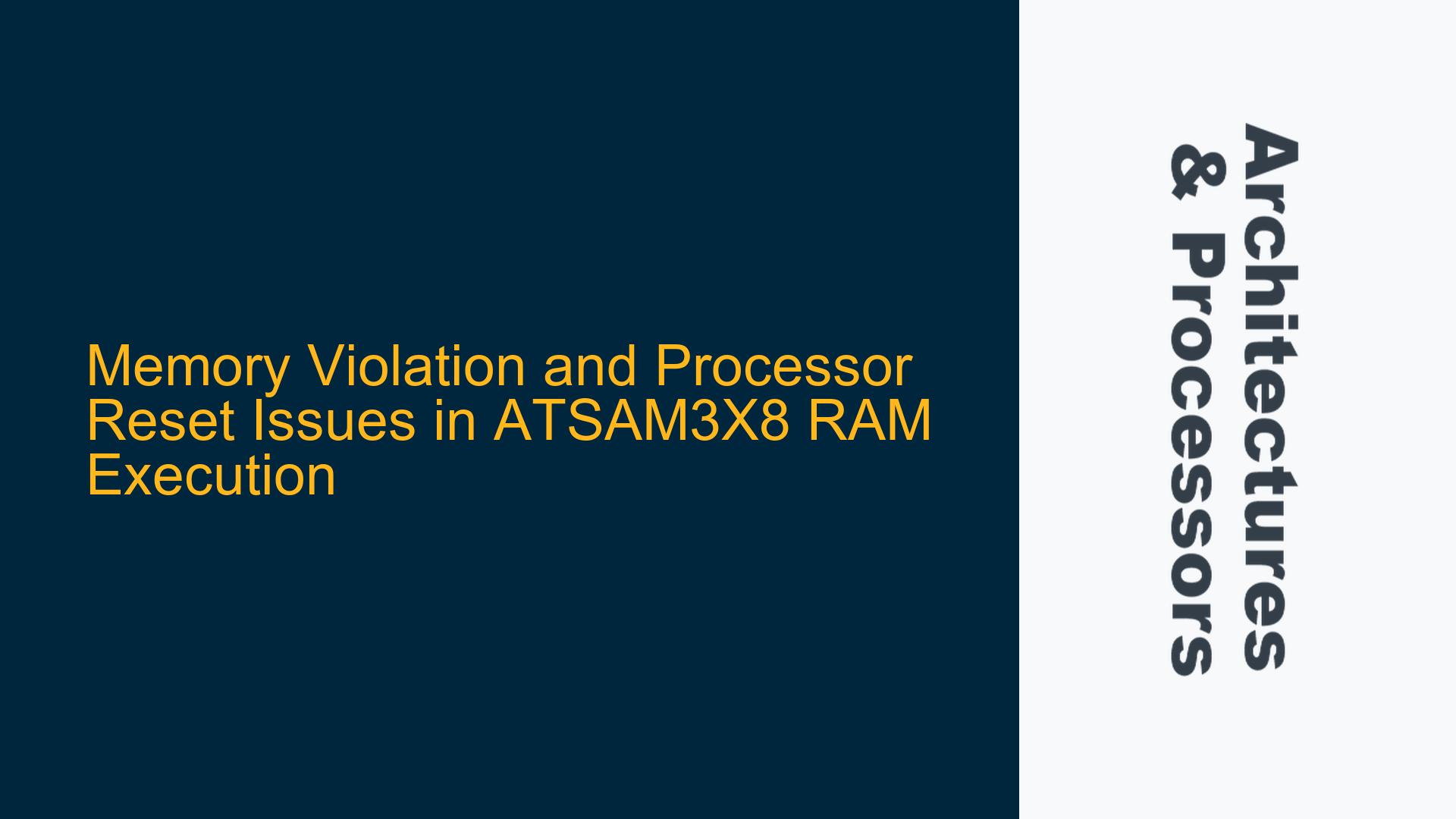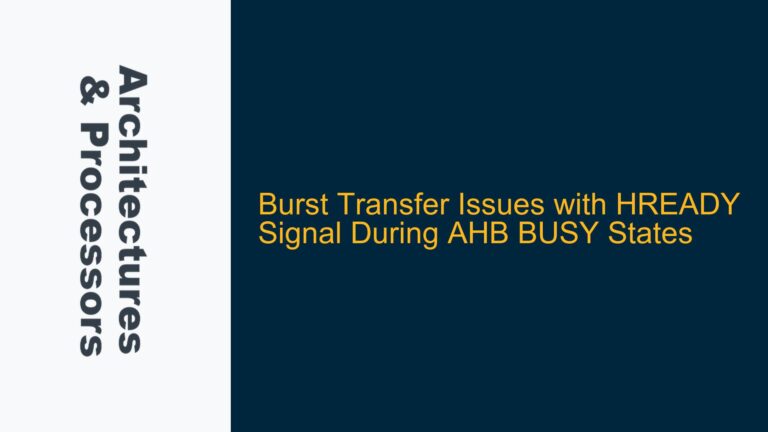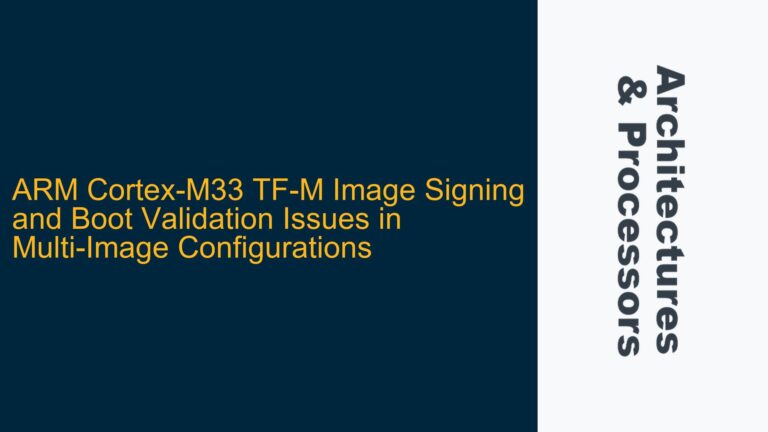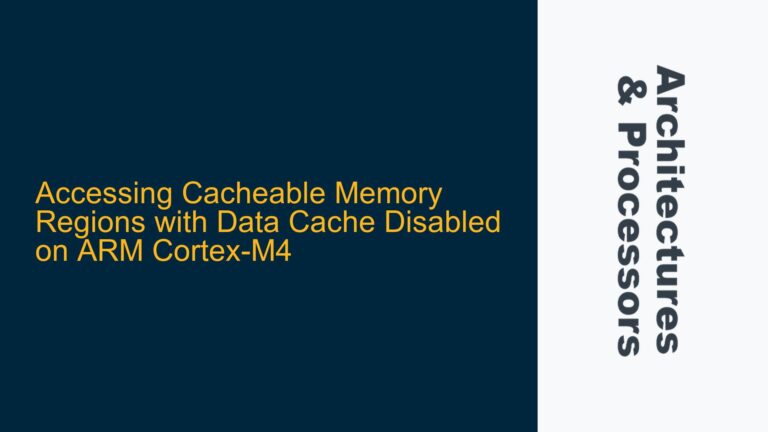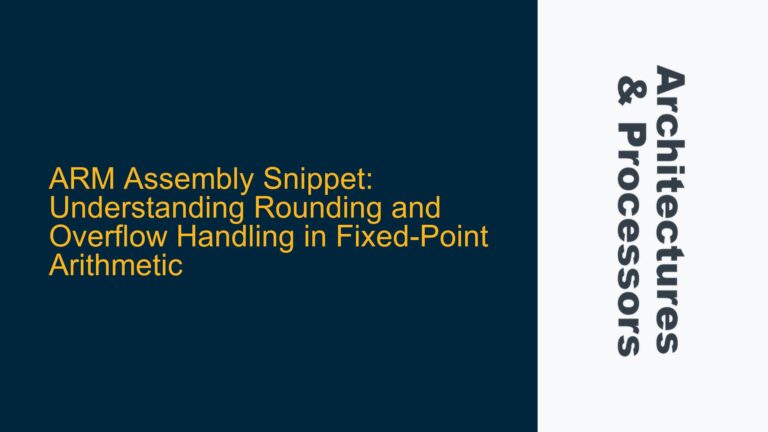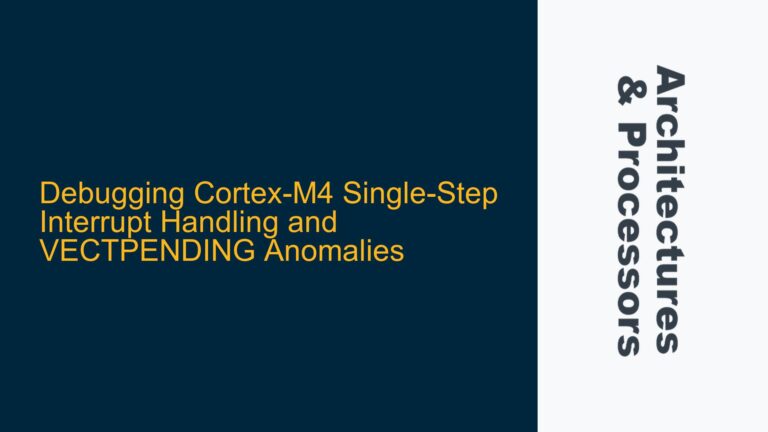ARM Cortex-M3 Memory Violation During Peripheral Initialization in RAM
The core issue revolves around a memory violation causing a processor reset when executing code from the RAM region of an ATSAM3X8 microcontroller. The code in question is a simple bootloader that loads and executes a secondary application from RAM. While basic operations like toggling an LED work fine, any attempt to initialize peripherals or call functions outside the immediate scope of the RAM-resident code results in a processor reset. This behavior is observed with calls to functions like Serial.begin(), pmc_enable_periph_clk(), and can_init(), which are standard in embedded systems for peripheral configuration and communication.
The ATSAM3X8 is based on the ARM Cortex-M3 architecture, which employs a Harvard architecture with separate buses for instruction and data access. The processor’s memory map is divided into regions for Flash, SRAM, and peripherals, each with specific access permissions and attributes. When executing code from RAM, the processor must ensure that all memory accesses, including those to peripherals, adhere to the memory protection unit (MPU) rules and the bus matrix configuration. The observed behavior suggests a violation of these rules, leading to a HardFault or similar exception that triggers a processor reset.
The issue is particularly perplexing because the same code executes without issues when run from Flash. This discrepancy points to a fundamental difference in how the processor handles memory accesses when executing from RAM versus Flash. The Flash memory region is typically configured with execute-never (XN) attributes for certain segments, while the RAM region may have different access permissions. Additionally, the Cortex-M3’s bus matrix and memory protection unit (MPU) play critical roles in ensuring that memory accesses are valid and do not violate the processor’s security model.
Improper Memory Mapping and Peripheral Access from RAM
The root cause of the memory violation and subsequent processor reset lies in the improper handling of memory mapping and peripheral access when executing code from RAM. The ATSAM3X8’s memory map is divided into several regions, each with specific access permissions and attributes. The Flash memory region is typically configured with execute-never (XN) attributes for certain segments, while the RAM region may have different access permissions. When executing code from RAM, the processor must ensure that all memory accesses, including those to peripherals, adhere to the memory protection unit (MPU) rules and the bus matrix configuration.
The Cortex-M3’s MPU is responsible for enforcing memory access rules, and any violation of these rules results in a HardFault exception. In this case, the processor reset is likely triggered by a HardFault caused by an invalid memory access. The issue is exacerbated by the fact that the code in question attempts to initialize peripherals and call functions that may access memory regions not properly mapped or configured for execution from RAM.
The ATSAM3X8’s peripheral memory region is typically located in a different address space than the RAM and Flash regions. When executing code from RAM, the processor must ensure that all memory accesses to the peripheral region are valid and do not violate the MPU rules. The observed behavior suggests that the peripheral memory region is not properly mapped or configured for execution from RAM, leading to a memory violation and subsequent processor reset.
Another potential cause is the improper handling of the stack and heap when executing code from RAM. The Cortex-M3’s stack and heap are typically located in the RAM region, and any corruption of these memory areas can lead to unpredictable behavior, including memory violations and processor resets. The issue may be further compounded by the fact that the code in question attempts to initialize peripherals and call functions that may access memory regions not properly mapped or configured for execution from RAM.
Configuring MPU and Bus Matrix for RAM Execution
To resolve the memory violation and processor reset issues, it is essential to properly configure the MPU and bus matrix for execution from RAM. The first step is to ensure that the RAM region is properly mapped and configured for execution. This involves setting the appropriate access permissions and attributes for the RAM region in the MPU. The MPU should be configured to allow execution from the RAM region while enforcing the necessary access permissions for peripheral and other memory regions.
The next step is to ensure that the peripheral memory region is properly mapped and configured for access from RAM. This involves setting the appropriate access permissions and attributes for the peripheral region in the MPU. The MPU should be configured to allow access to the peripheral region while enforcing the necessary access permissions for other memory regions.
In addition to configuring the MPU, it is essential to ensure that the bus matrix is properly configured for execution from RAM. The bus matrix is responsible for routing memory accesses between the processor and the various memory regions. The bus matrix should be configured to ensure that all memory accesses from the RAM region are properly routed and do not violate the MPU rules.
Another critical step is to ensure that the stack and heap are properly configured for execution from RAM. The stack and heap should be located in the RAM region and should be properly aligned and sized to avoid corruption. The stack and heap should be configured to ensure that all memory accesses from the RAM region are properly routed and do not violate the MPU rules.
Finally, it is essential to ensure that the code in question is properly linked and loaded for execution from RAM. The linker script should be configured to ensure that the code is properly located in the RAM region and that all memory accesses are properly routed and do not violate the MPU rules. The loader code should be configured to ensure that the code is properly loaded into the RAM region and that all memory accesses are properly routed and do not violate the MPU rules.
In summary, resolving the memory violation and processor reset issues requires a comprehensive approach that involves configuring the MPU, bus matrix, stack, heap, linker script, and loader code for execution from RAM. By properly configuring these components, it is possible to ensure that all memory accesses from the RAM region are properly routed and do not violate the MPU rules, thereby preventing memory violations and processor resets.
Detailed Configuration Steps for MPU and Bus Matrix
To provide a more detailed guide, let’s break down the configuration steps for the MPU and bus matrix:
-
MPU Configuration for RAM Execution:
- Region Base Address: Set the base address of the RAM region in the MPU. For the ATSAM3X8, this is typically 0x20000000.
- Region Size: Define the size of the RAM region. Ensure it covers the entire RAM area used by the application.
- Access Permissions: Configure the access permissions to allow read, write, and execute (RXW) for the RAM region.
- Memory Attributes: Set the memory attributes to ensure the RAM region is marked as executable.
-
MPU Configuration for Peripheral Access:
- Region Base Address: Set the base address of the peripheral region. For the ATSAM3X8, this is typically 0x40000000.
- Region Size: Define the size of the peripheral region. Ensure it covers all peripherals used by the application.
- Access Permissions: Configure the access permissions to allow read and write (RW) but not execute (XN) for the peripheral region.
- Memory Attributes: Set the memory attributes to ensure the peripheral region is marked as non-executable.
-
Bus Matrix Configuration:
- Memory Routing: Ensure the bus matrix routes memory accesses from the RAM region to the appropriate memory areas, including peripherals.
- Access Control: Configure the bus matrix to enforce access control rules, ensuring that memory accesses from the RAM region do not violate the MPU rules.
-
Stack and Heap Configuration:
- Stack Alignment: Ensure the stack is properly aligned and sized to avoid corruption. The stack should be located in the RAM region.
- Heap Alignment: Ensure the heap is properly aligned and sized to avoid corruption. The heap should be located in the RAM region.
-
Linker Script Configuration:
- Memory Regions: Define the memory regions in the linker script, ensuring the RAM region is properly mapped.
- Section Placement: Place the code and data sections in the appropriate memory regions, ensuring the RAM region is used for execution.
-
Loader Code Configuration:
- Code Loading: Ensure the loader code properly loads the application code into the RAM region.
- Memory Access Routing: Ensure the loader code properly routes memory accesses to the appropriate memory areas, including peripherals.
By following these detailed configuration steps, you can ensure that the MPU, bus matrix, stack, heap, linker script, and loader code are properly configured for execution from RAM. This will prevent memory violations and processor resets, allowing the application to run smoothly from the RAM region.
Conclusion
The memory violation and processor reset issues observed when executing code from RAM on the ATSAM3X8 microcontroller are caused by improper memory mapping and peripheral access configurations. By properly configuring the MPU, bus matrix, stack, heap, linker script, and loader code, it is possible to ensure that all memory accesses from the RAM region are properly routed and do not violate the MPU rules. This comprehensive approach will prevent memory violations and processor resets, allowing the application to run smoothly from the RAM region.
